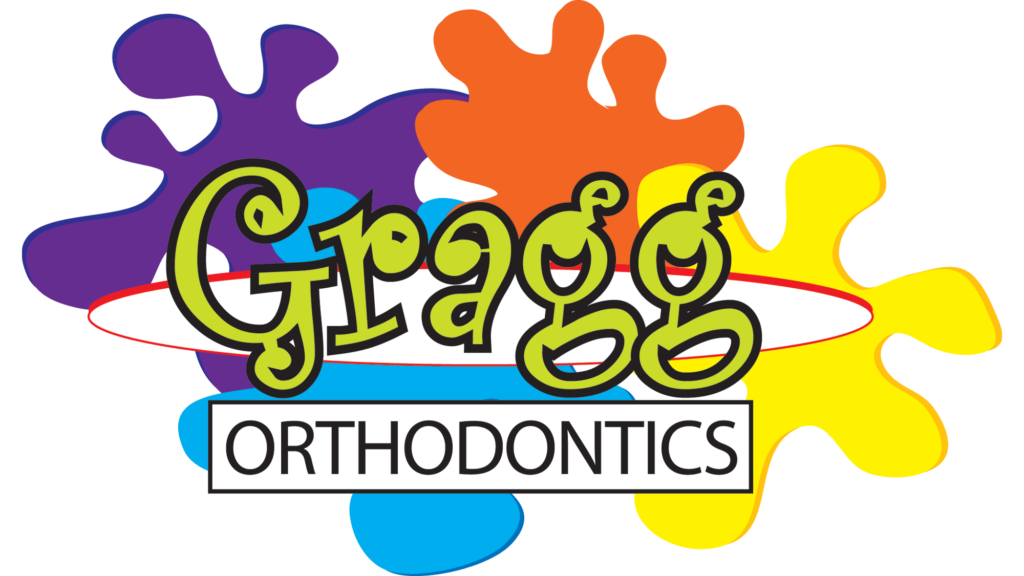Are you tired of dealing with constant jaw pain, headaches, or that annoying clicking sound every time you chew? You might be suffering from TMJ (temporomandibular joint) disorder. TMJ pain can be a real nuisance, affecting everything from eating to talking and even sleeping.
But what if we told you that braces might be the solution you’ve been looking for?
At Gragg Orthodontics, we’ve seen firsthand how braces can not only straighten teeth but also alleviate the discomfort associated with TMJ disorders.
In this article, we’ll dive into how braces work to relieve TMJ pain, the process of getting braces for TMJ treatment, and share some success stories from our satisfied patients. So, if you’ve been wondering, “Can braces fix TMJ?” or “Do braces help TMJ?” – you’re in the right place.
Let’s get started!
Understanding TMJ Pain
To tackle TMJ pain, it’s crucial to understand what the temporomandibular joint (TMJ) is and how it can cause discomfort. The TMJ is the hinge-like joint that connects your jawbone to your skull, allowing you to open and close your mouth, chew, speak, and even yawn.
When this joint isn’t working correctly, it can lead to a range of painful symptoms.
Common Symptoms of TMJ Disorders:
- Jaw Pain: Persistent pain in the jaw joint and surrounding muscles.
- Headaches: Frequent headaches or migraines that can mimic tension headaches.
- Clicking or Popping: Noticeable clicking, popping, or grating sounds when you move your jaw.
- Lockjaw: Difficulty opening or closing your mouth completely.
- Ear Pain: Earaches or ringing in the ears without an ear infection.
- Facial Pain: Pain or tenderness in the face, neck, and shoulders.
Causes and Risk Factors:
- Misaligned Teeth or Jaw: Poor alignment can put extra stress on the TMJ.
- Injury: Trauma to the jaw or head can damage the TMJ.
- Arthritis: Inflammatory conditions like arthritis can affect the TMJ.
- Grinding or Clenching: Habitual grinding or clenching of teeth (bruxism) can strain the TMJ.
- Stress: High levels of stress can lead to muscle tension and jaw clenching.
Understanding these symptoms and causes is the first step towards finding relief. If you’re experiencing any of these issues, it might be time to explore whether braces could be the answer to your TMJ problems.
How Braces Can Help with TMJ Pain
You might be wondering, “Can braces fix TMJ?” The answer is often yes!
Braces can be an effective treatment for alleviating TMJ pain by addressing the underlying causes of the disorder.
Here’s how braces can help:
Aligning Teeth and Jaws
One of the primary functions of braces is to correct the alignment of your teeth and jaws. Misaligned teeth and jaws can place extra stress on the TMJ, leading to pain and discomfort.
By straightening your teeth and properly aligning your jaw, braces can reduce the strain on the TMJ, allowing it to function more smoothly and without pain.
Reducing Teeth Grinding and Clenching
Misaligned teeth can contribute to bruxism, the habit of grinding or clenching your teeth, especially at night. This constant pressure on the TMJ can exacerbate pain and lead to further joint damage.
By correcting the alignment of your teeth, braces can help reduce the tendency to grind or clench, thus easing the pressure on the TMJ.
Improving Bite Function
A misaligned bite, such as an overbite, underbite, or crossbite, can cause uneven pressure distribution across your teeth and jaw joints.
Braces can correct these bite issues, ensuring that your teeth meet correctly when you chew. This balanced bite reduces the risk of overworking the TMJ and the surrounding muscles, helping to alleviate pain.
Promoting Proper Jaw Position
Braces can guide your jaw into a more natural and comfortable position. When your jaw is correctly aligned, the TMJ operates more efficiently, reducing the likelihood of pain and discomfort.
This proper alignment can also prevent future TMJ problems from developing.
Long-Term Relief
While braces do require a commitment of time and patience, the long-term benefits for TMJ sufferers can be significant.
Once your braces have done their job, you can enjoy a properly aligned bite and a well-functioning TMJ, leading to a reduction or even elimination of TMJ pain.
The Process of Getting Braces for TMJ Treatment
Deciding to get braces for TMJ treatment is a big step, but understanding the process can help ease any concerns you might have.
Here’s a breakdown of what you can expect when you embark on this journey with Gragg Orthodontics:
1. Initial Consultation
Your first step will be an initial consultation with our experienced orthodontists. During this visit, we’ll discuss your symptoms, medical history, and any previous treatments you’ve tried for TMJ pain.
This is also your chance to ask questions and express any concerns you may have about braces and TMJ treatment.
2. Comprehensive Examination
Next, we’ll perform a thorough examination of your teeth, jaw, and overall oral health. This may include taking X-rays, photographs, and impressions of your teeth.
These diagnostic tools help us understand the exact alignment of your teeth and jaws and determine how braces can best address your TMJ issues.
3. Customized Treatment Plan
Based on the findings from your examination, we’ll create a customized treatment plan tailored to your specific needs.
This plan will outline the type of braces recommended, the estimated duration of treatment, and any additional therapies that may be beneficial for your TMJ condition.
4. Fitting the Braces
Once your treatment plan is finalized, it’s time to get your braces fitted. This involves attaching brackets to your teeth and threading archwires through them.
Don’t worry – it’s a relatively painless process, and our team will ensure you’re comfortable throughout.
5. Regular Adjustments
Throughout your treatment, you’ll visit Gragg Orthodontics regularly for adjustments. These appointments are crucial for monitoring your progress and making any necessary changes to your braces.
Adjustments help guide your teeth and jaws into the correct positions, alleviating TMJ pain over time.
6. Monitoring and Support
Your orthodontic journey doesn’t end once your braces are on. We’ll provide continuous monitoring and support to ensure your treatment is progressing as planned.
Our team is always available to address any concerns and provide guidance on managing your TMJ symptoms.
7. Retainer Phase
After your braces are removed, you’ll enter the retainer phase. Wearing a retainer helps maintain the new alignment of your teeth and jaws, preventing any relapse that could bring back TMJ pain.
We’ll provide detailed instructions on how to care for and use your retainer effectively.
Conclusion
Living with TMJ pain can be challenging, but there’s hope. Braces have proven to be an effective solution for many people suffering from TMJ disorders. By aligning your teeth and jaws, braces can alleviate the stress on your temporomandibular joint, reducing or even eliminating your pain.
At Gragg Orthodontics, we understand the unique challenges that come with TMJ disorders.
Our personalized approach ensures that your treatment plan addresses your specific needs, aiming not only to improve your smile but also to provide long-lasting relief from TMJ symptoms. Whether you’re wondering, “Can braces fix TMJ?” or “Do braces help TMJ?” the answer often lies in a comprehensive evaluation and a tailored treatment plan.
Don’t let TMJ pain control your life. Reach out to Gragg Orthodontics today to schedule a consultation. We’re here to help you explore your options and start your journey towards a pain-free, confident smile. With our expertise and commitment to patient care, you can look forward to a brighter, more comfortable future.

